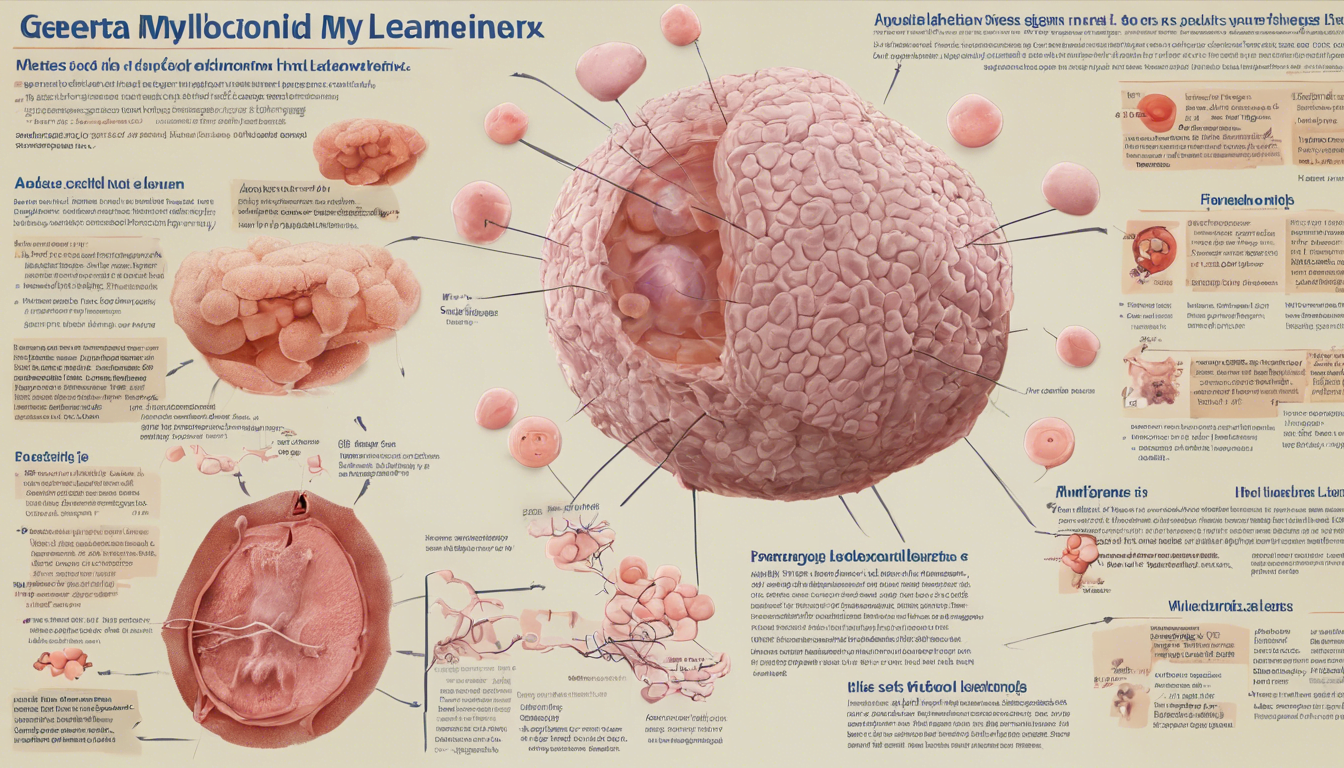Understanding the early warning signs of acute myeloid leukemia (AML) can be crucial in its diagnosis and management. As one of the most serious forms of cancer affecting the blood and bone marrow, acute myeloid leukemia’s prompt recognition plays a pivotal role in improving the prognosis and survival rate of patients. Despite its rarity, the complexity and aggressiveness of acute myeloid leukemia demand our vigilant awareness and knowledge of its early markers. Addressing the causes of acute myeloid leukemia and identifying its symptoms early can significantly impact treatment outcomes.
In this article, we aim to delve into the specifics of what is acute myeloid leukemia, its etiology, risk assessment, and the signs and symptoms that warrant immediate attention. Following this, we will explore the latest in acute myeloid leukemia treatments, covering both established and emerging protocols. Our discussion will also include insights into the acute myeloid leukemia prognosis and survival rates, highlighting how advances in treatment have shaped outcomes for patients across different age groups. By understanding these facets of acute myeloid leukemia, we equip ourselves with the knowledge to face this formidable disease with informed confidence.
Overview of Acute Myeloid Leukemia
What is AML?
Acute myeloid leukemia (AML) is a cancer originating in the bone marrow—the soft inner part of bones where new blood cells are produced. It frequently extends into the bloodstream and can spread to other parts of the body such as lymph nodes, liver, spleen, central nervous system, and testicles. AML affects primarily cells that would normally develop into white blood cells, excluding lymphocytes, though it can occasionally involve other blood-forming cells.
How It Affects the Body
In AML, the DNA of a developing stem cell in the bone marrow is damaged, leading to the formation of leukemic cells. These cells, known as leukemic blasts, proliferate rapidly and fail to function as normal blood cells. They crowd out healthy cells, leading to a reduced number of functional blood cells and resulting in conditions such as anemia, neutropenia, thrombocytopenia, and pancytopenia. This disruption severely impacts the body’s ability to carry oxygen, fight infections, and control bleeding.
Differences from Other Leukemias
AML is distinct from other types of leukemia by its rapid progression and the types of cells it affects. It is also known by several other names, including acute myelocytic leukemia, acute myelogenous leukemia, acute granulocytic leukemia, and acute non-lymphocytic leukemia, reflecting its various forms and the cells involved. Unlike chronic leukemias, AML develops quickly and requires immediate treatment. The disease mostly affects myeloid cells, which are a type of blood-forming cell that can develop into various types of blood cells, excluding lymphocytes.
Etiology and Risk Assessment
Genetic Causes
We are beginning to understand that certain genetic changes play a significant role in the development of acute myeloid leukemia (AML). These changes often occur in genes that regulate cell growth and division. For instance, mutations in oncogenes and tumor suppressor genes can lead to uncontrolled cell proliferation. Chromosomal abnormalities such as translocations, deletions, and duplications also contribute to the onset of AML by disrupting normal gene function.
Exposure to Chemicals and Radiation
Our exposure to certain chemicals and radiation has been identified as a significant risk factor for AML. Long-term exposure to benzene, commonly found in the rubber industry and cigarette smoke, is well-documented to increase AML risk. Similarly, exposure to high-dose radiation, like that from previous cancer treatments or radiation accidents, has been linked to a higher incidence of AML. The risk associated with lower levels of radiation, such as from X-rays, remains less clear but is considered potentially harmful.
Risk Due to Previous Treatments
Patients previously treated with certain chemotherapy drugs face a heightened risk of developing AML. Alkylating agents and topoisomerase II inhibitors, used in chemotherapy, are particularly associated with subsequent AML diagnosis. This risk increases with the dosage and duration of treatment. Additionally, survivors of solid tumors treated with chemotherapy have shown an elevated risk of therapy-related myelodysplastic syndrome or AML, emphasizing the need for careful monitoring and follow-up in these patients.
Signs, Symptoms, and Diagnosis
Symptoms to Look Out For
We often encounter a range of symptoms that could suggest acute myeloid leukemia (AML), including fatigue, fever, easy bruising, and unexplained weight loss. These symptoms, due to the high levels of cancerous myeloblasts in the bone marrow, prevent the growth of normal blood cells leading to these manifestations. It’s crucial to recognize that while these signs can indicate AML, they may also be common to other less serious conditions. Thus, a detailed evaluation by a healthcare professional is essential for accurate interpretation.
Initial Diagnostic Steps
When we suspect AML based on initial symptoms, the first step typically involves a comprehensive medical history and a physical examination. During this exam, doctors look for physical signs such as swollen lymph nodes, liver, or spleen and check for skin changes. Blood tests play a pivotal role as they reveal crucial information about blood cell counts. A complete blood count (CBC) is usually the initial test performed. If abnormalities are detected, further referral to a hematologist is often the next step.
Confirmatory Tests
To confirm a diagnosis of AML, more specific tests are required. These include bone marrow aspiration and biopsy, where samples are taken to look for the presence of leukemia cells. This procedure is crucial as it helps in identifying the percentage of blasts, which are immature cells indicative of AML. If the blast count is 20% or more, it typically confirms the diagnosis. Additionally, tests like lumbar puncture are performed to check for the spread of cancer to the spinal fluid, especially if there are neurological symptoms. Advanced imaging and molecular testing can also be conducted to identify specific genetic mutations and guide treatment options.
Treatment Protocols
Initial Therapy (Induction)
The initial phase of treating acute myeloid leukemia (AML) involves remission induction therapy, which is crucial for reducing the leukemia cell population in the bone marrow to undetectable levels. This phase typically employs a combination of chemotherapy drugs, primarily cytarabine and an anthracycline drug, to induce remission. The standard regimen, known as “7+3,” involves administering cytarabine continuously for seven days and an anthracycline over the first three days. For patients with specific genetic mutations, targeted therapies like midostaurin or gemtuzumab ozogamicin are included to enhance treatment efficacy.
Post-Remission Therapy
Once remission is achieved, post-remission therapy is essential to prevent relapse. This phase generally includes intensive chemotherapy or stem cell transplantation. Younger patients or those in better health may undergo several cycles of high-dose cytarabine (HiDAC) or opt for allogeneic (donor) or autologous stem cell transplants. Older patients or those with significant health issues may receive less intensive treatment options, such as lower doses of cytarabine or non-myeloablative stem cell transplants, to balance efficacy against potential side effects.
Innovative Treatments and Clinical Trials
Advancements in treatment protocols and the integration of new drugs are continually being explored through clinical trials. Current trials are assessing the efficacy of novel agents like venetoclax, enasidenib, and FLT3 inhibitors in combination with standard treatments to improve outcomes for patients with specific genetic profiles. Additionally, innovative approaches such as CAR T-cell therapy are under investigation, which involves modifying a patient’s T cells to better target and destroy leukemia cells.
In conclusion, the treatment of AML is a structured multi-phase process tailored to individual patient needs and characteristics, with ongoing research aimed at improving survival rates and quality of life through new therapeutic strategies.
Conclusion
Through an in-depth exploration of acute myeloid leukemia, this article has depicted the critical importance of recognizing the early symptoms and warning signs that can steer timely diagnoses and interventions. By shedding light on the underlying etiology, risk factors, and the manifesting clinical presentations of AML, we have aimed to expand understanding of this aggressive cancer, thereby facilitating early detection that is pivotal for improving patient outcomes. The journey from identifying early symptoms to the diagnosis and through to the multi-faceted approach of treatment has been charted with the hope of offering clarity and guidance for those facing this daunting diagnosis.
As we conclude, it is evident that the landscape of AML treatment is continuously evolving, underscored by the advancement in targeted therapies and the potential held by emerging treatment modalities. This constant development not only promises better survival rates but also aims at enhancing the quality of life for patients with AML. Emphasizing the essence of awareness, continuous research, and innovation in the fight against acute myeloid leukemia, this article reinforces the necessity for both the medical community and the public to remain vigilant and informed, laying the groundwork for hopeful advancements in the care and treatment of AML.




